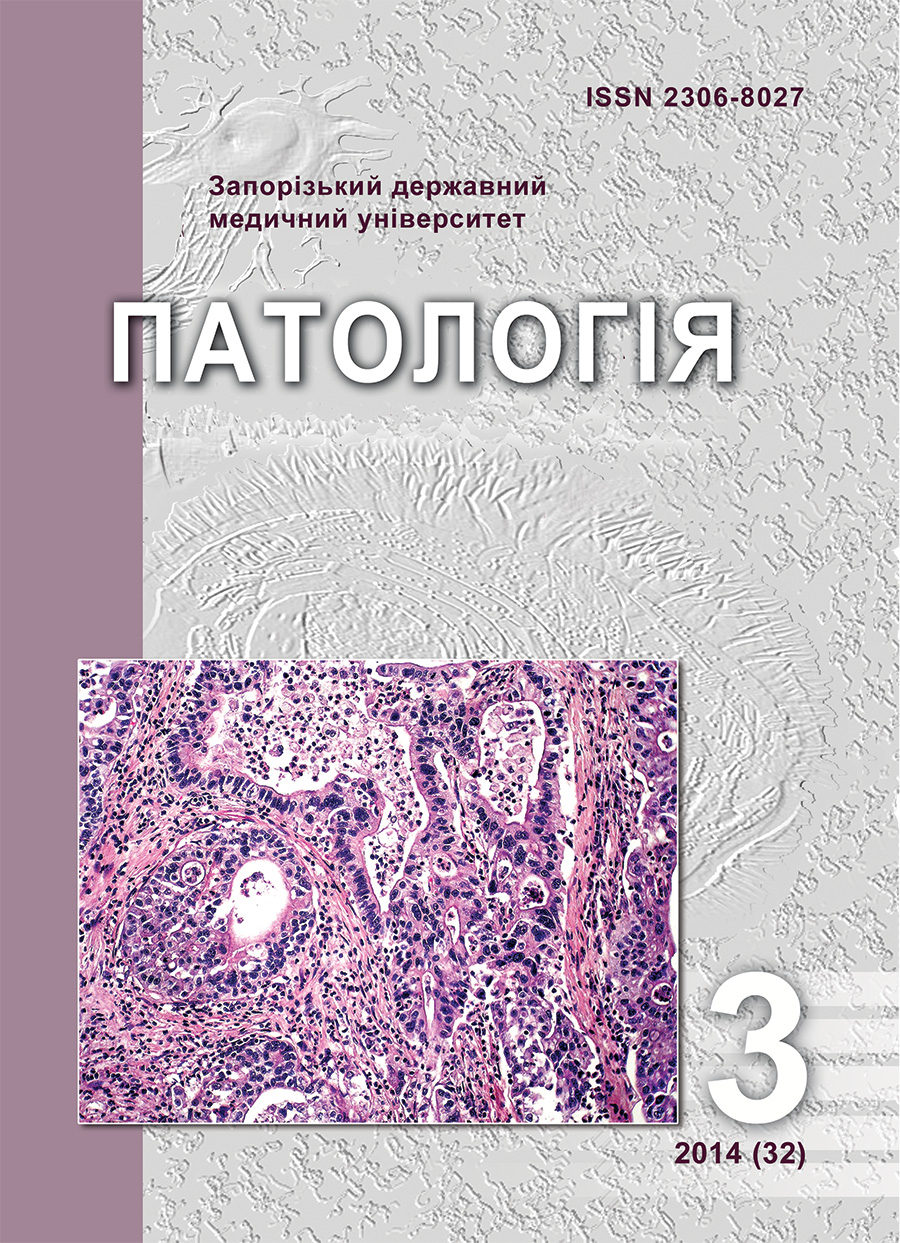PNA- and SBA-positive lymphocytes content in the major salivary glands’ structures during early postnatal period after intrauterine antigenic action
DOI:
https://doi.org/10.14739/2310-1237.2014.3.36981Keywords:
Salivary Glands, Peanut Agglutinin, Soybean Agglutinin, Lymphocytes, RatsAbstract
Aim – to determine the Peanut agglutinin- and Soybean agglutinin-positive (PNA+, SBA+) lymphocytes content in the major salivary glands’ structures in early postnatal period after intrauterine antigenic action.
Methods and results. 224 submandibular salivary glands of white laboratory rats were investigated through the lectinhistochemical and statistical methods.
Conclusions. In newborn animals after intrauterine antigen action the increased content of PNA+ intraepithelial lymphocytes and PNA+ stromal lymphocytes of major salivary glands was determined as compared to control group. That tendency remains till the 14th day, gradually decreasing till the 45th day of postnatal formation. Quantity of SBA+ lymphocytes decreased in antigenpremium animals as compared with control group animals. In addition, the quantity of SBA+ lymphocytes in experimental group remains lower during two weeks after birth. On the 45th day ofpostnatal formation the findings do not differ among experimental animals.
References
Adi, M. M, Chisholm, D. M, & Waterhouse, J. P. (1995). Histochemical study of lectin binding in the human fetal minor salivary glands. J Oral Pathol Med., 24(3), 130–5. doi: 10.1111/j.1600-0714.1995.tb01153.x
Antoniuk, V. O. (2005). Lektyny ta yikh syrovynni dzherela [Lectins and their raw sources]. Lviv: Kvart. [in Ukrainian].
Burega, Yu. O. (2013). Shchilnist rozpodilu PNA+ limfotsytiv v yasnakh epiteliiu shchuriv pislia dii AH [Distribution density of PNA+ lymphocyte in the rat’s gums epithelium after antigen action]. Aktualni problemy ta perspektyvy rozvytku medychnoi, farmatsevtychnoi ta pryrodnychykh nauk. Proceedings of the Scientific and Practical Congress, (pp. 56–57). Zaporizhia. [in Ukrainian].
Cortez, V. S., Fuchs, A., Cella, M., Gilfillan, S., & Colonna, M. (2014).Cutting edge: Salivary gland NK cells develop independently of Nfil3 in steady-state. J Immunol., 15, 192(10), 4487–91. doi:10.4049/jimmunol.1303469.
Nwawka, O.K., Nadgir, R., Fujita, A., & Sakai, O. (2014). Granulomatous Disease in the Head and Neck: Developing a Differential Diagnosis. Radiographics., 34(5), 1240–56. doi: http://dx.doi.org/10.1148/rg.345130068.
O'Sullivan, N. L., Skandera, C. A., & Montgomery, P. C. (2001). Lymphocyte lineages at mucosal effector sites: rat salivary glands. J Immunol., 1, 166(9), 5522–5529. doi: 10.4049/jimmunol.166.9.5522.
Pedini, V., Scocco, P., Dall'Aglio, C., Ceccarelli, P., & Gargiulo, A. M. (2000). Characterisation of sugar residues in glycoconjugates of pig mandibular gland by traditional and lectin histochemistry. Res Vet Sci., 69(2), 159–63.
Tessmer, M. S., Reilly, E. C., & Brossay, L. (2011). Salivary Gland NK Cells are Phenotypically and Functionally Unique. PLoS Pathog, 7(1), e1001254. doi:10.1371/journal.ppat.1001254.
Voloshyn, N. A. (2005). Limfocit – faktor morfogeneza [Lymphocyte – the factor of morphogenesis]. Zaporozhskij medicinskij zhurnal, 5, 122. [in Ukrainian].
Voloshyn, N. A., Matviishyna, T. N., Burega, Yu. A., Hrinivetska, N. V., & Talanova, O. S. (2011). Sposib modeliuvannia vnutrishnoutrobnoi antygennoi dii. [A method of modeling intrauterine antigenic action]. Ukraine patent. UA 02218. Feb 12. Int.Cl. G09B 23/28. [in Ukrainian].
Downloads
How to Cite
Issue
Section
License
Authors who publish with this journal agree to the following terms:- Authors retain copyright and grant the journal right of first publication with the work simultaneously licensed under a Creative Commons Attribution License that allows others to share the work with an acknowledgement of the work's authorship and initial publication in this journal.

- Authors are able to enter into separate, additional contractual arrangements for the non-exclusive distribution of the journal's published version of the work (e.g., post it to an institutional repository or publish it in a book), with an acknowledgement of its initial publication in this journal.
- Authors are permitted and encouraged to post their work online (e.g., in institutional repositories or on their website) prior to and during the submission process, as it can lead to productive exchanges, as well as earlier and greater citation of published work (SeeThe Effect of Open Access).

